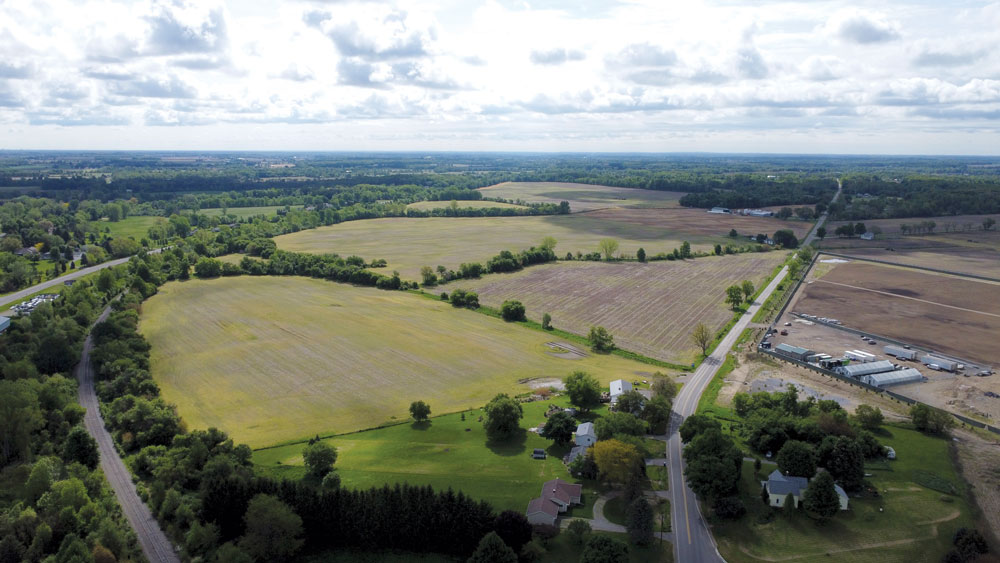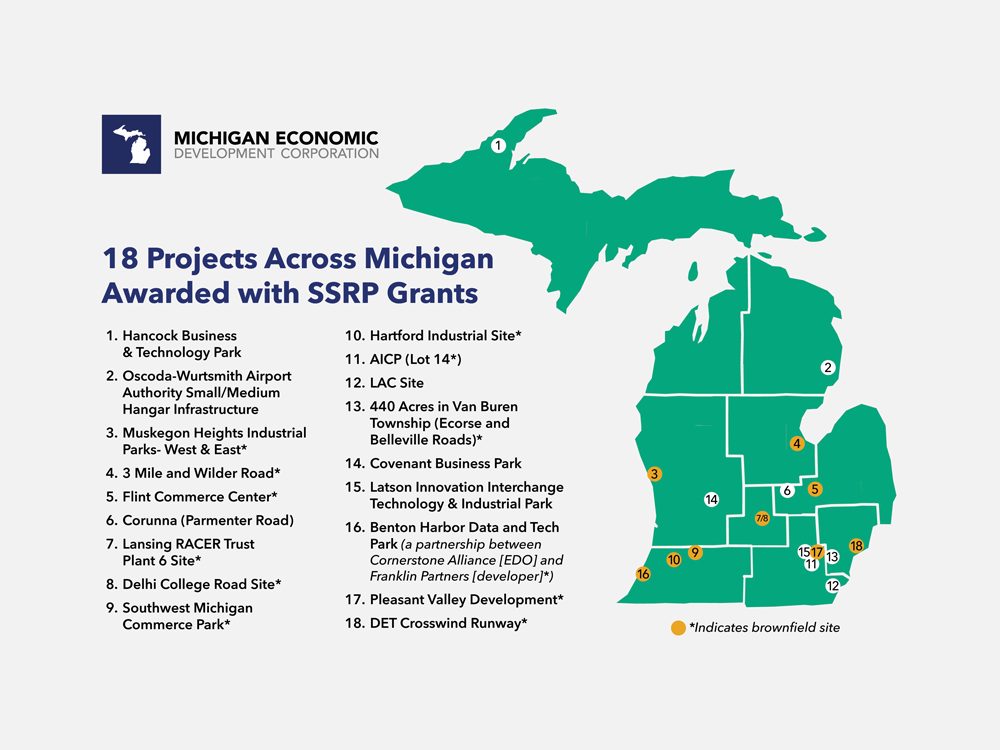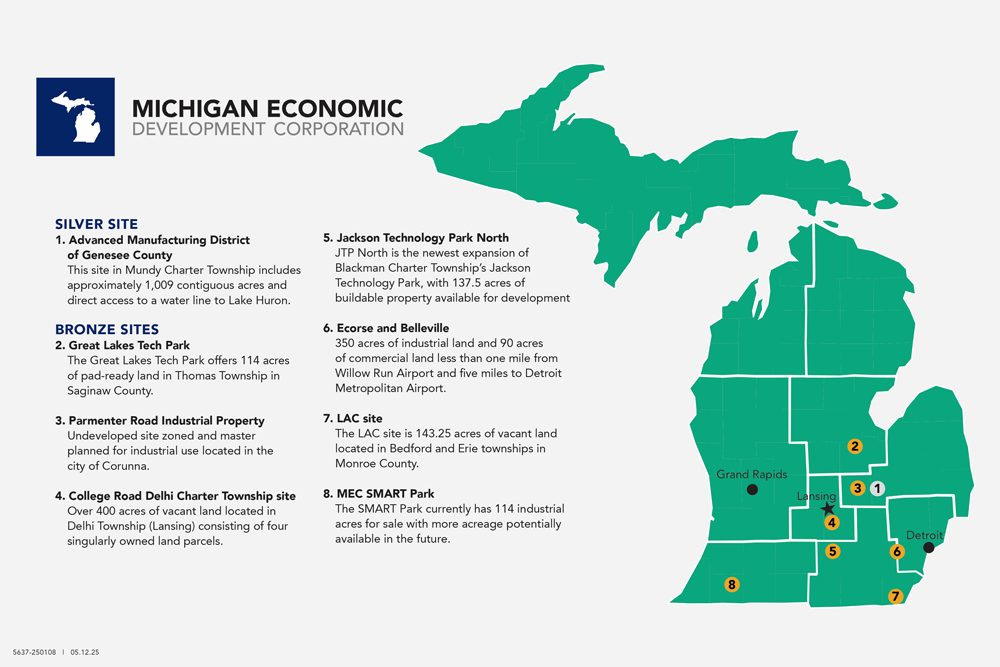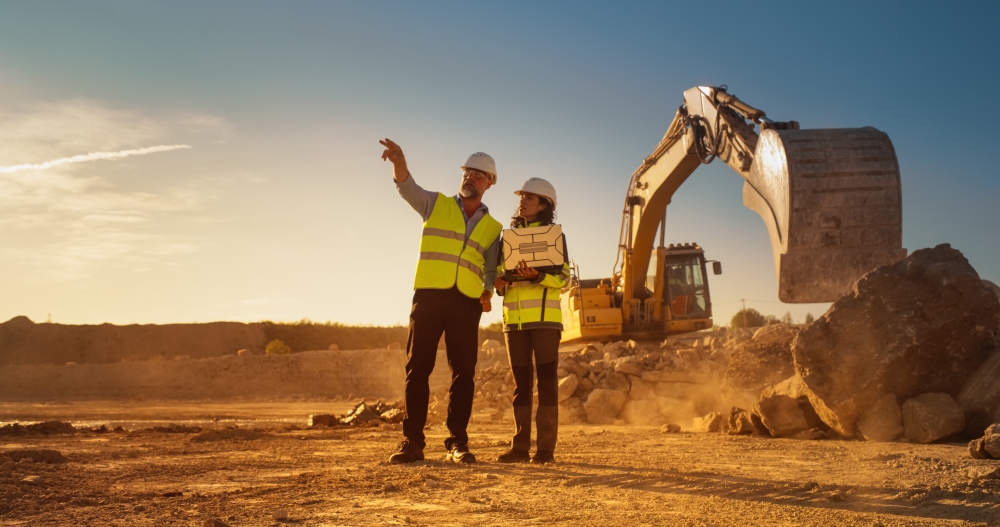Gov. Whitmer authorizes grants to improve development-ready sites statewide.
michigan is getting even more competitive for industry and jobs thanks to the launch of two initiatives designed to expedite economic development: the MI Sites Program and the Strategic Site Readiness Program (SSRP).
Launched with a pilot round rollout in 2024, MI Sites is designed to build a statewide portfolio of development-ready sites for marketing to companies and site selectors worldwide. To help accomplish this goal, the state established set criteria for site readiness.
According to the Michigan Economic Development Corporation (MEDC), the program is designed to position Michigan to better compete for current and future projects by identifying the strengths and weaknesses of each industrial property and providing individualized plans for enhancing readiness. Training and guidance are provided to applicants at each step in the process to enable them to succeed and win state grant money.
To help vet each site put forth by an applicant, the MEDC has retained the services of a professional site selection consulting firm to conduct site visits, collect information, and determine the site readiness of each property. Each site is evaluated and placed in one of three categories: Gold, Silver, or Bronze. If awarded status on one of these tiers, the applicant can apply for state funding.

Each site must be at least 25 acres in size and be available for sale. The current zoning must be known, and the site must be designated for future industrial use by the jurisdiction in which the property is located.
Nine sites were vetted and moved forward during the pilot round process of 2024.
The SSRP, established in 2021, was approved by Gov. Gretchen Whitmer for $87.5 million in funding in 2024. Some 18 projects across Michigan received SSRP grants that year. They ranged from the Hancock Business & Technology Park in the far northern section of the Upper Peninsula to the DET Crosswind Runway in Detroit.
“These grants will fund 18 projects across Michigan, preparing us to win more manufacturing projects creating thousands of good-paying jobs,” Gov. Whitmer said in announcing the 18 awards. “Together, with a strong, bipartisan economic development toolkit, we are competing with other states and nations to bring home supply chains of cars, chips, and clean energy. We will get it done while making communities across Michigan — from big cities to small towns — better places to live, work, and invest. Let’s move some dirt!”
Established in 2021, the SSRP incentivizes eligible applicants to make improvements to strategic or large-scale sites in Michigan. The purpose is to attract more investment to the state. Gov. Whitmer was given up to $100 million to award to selected, qualified applicants.

Paul O’Connell, vice president of real estate development for the MEDC, says the state recognized that it had fallen behind other states in site readiness, and that led to the creation of the two new programs.
Over the
past two years, Michigan has spent $400 million
on site
readiness.
Source: MEDC
“We did not have the knowledge of how to develop sites,” O’Connell says. “The tiered program that we set up provides that roadmap. To help applicants get to Bronze, Silver, or Gold status, the state provides grant dollars to move the process forward. Since March of 2023, we have spent just under $400 million on site readiness.”
O’Connell says that thanks to these twin initiatives, “We are now making great progress across the state on sites of various sizes — from 25 to 1,300 acres. It makes sense for the local community. We are looking for sites that fit all sorts of industries. Michigan is focused on having a diverse economy, and this is helping us achieve that goal.”
When asked how MI Sites and the SSRP have been received by end-users, he says the feedback has been good so far. Site selectors understand that the state had been behind. This drives interest and changes the perspective.
O’Connell adds that MI Sites delivers two main takeaways:
“It is a two-step process: one application that is high level, and then we down select to a small group of the best and most marketable sites.”
“Every site ends up with a few deliverables: site maps with overlays, site property report, utility questionnaire, what upgrades are needed to hit certain levels, etc.”
He went on to describe the three tiers as follows:
“Bronze tier is our lowest impact tier for the applicant. It involves a review of publicly available land.
“Silver tier — we assess and quantify the biggest obstacles, estimate the cost of utility needs, and complete studies on the site.
“Gold tier is truly the gold standard. All due diligence is done. We have complete engineering plans and control of the site. We can execute the land to an end-user with no concerns whatsoever.”

O’Connell adds that, unlike other states, Michigan does not require matching dollars at the local level. The entire site evaluation process, he says, takes about six months.
“We want to make sure you can get started in this process quickly. The program is specifically designed around fields. Both brownfield sites and greenfield sites are acceptable. We are not reviewing buildings at this time.”
Another plus is that these new programs are making it possible for Michigan to compete for projects that require large tracts, known as mega-sites.

“We are looking for sites that fit all sorts of industries. Michigan is focused on having a diverse economy, and this is helping us achieve that goal.”
— Paul O’Connell, vice president of real estate development, MEDC
“Our largest site is 1,300 acres,” O’Connell says. “That is the Advanced Manufacturing District in Mundy Township in Genesee County. It is a mega-site. No one has committed to taking that site yet, so it is still available, and we are actively marketing it.”
He adds, “We will see smaller average sites in Northern Michigan. About 100 to 500 acres is the range that is needed in Michigan now. Our goal is to maximize economic development and jobs across the state.”
Next up for Michigan is the kickoff of the next round of site awards and funding. “We hope to have 12 to 14 sites in that round,” O’Connell says. “Those designations will come out in the fall of 2025.”
To promote the investment-ready sites, the state launched a new website at the beginning of March. It is focused on meeting the needs of companies and site selectors.
“We continue to search for new sites proactively and reactively,” O’Connell adds. “We have engaged a consulting firm to help with that. On top of that, we set aside another $25 million last year to help local economic developers find sites in their region.”

